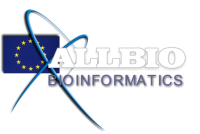
If you are interested in participating this Coordination Action please contact us!
This shows you the differences between two versions of the page.
| Both sides previous revisionPrevious revisionNext revision | Previous revision | ||
| public:loadedtestcases:tc5 [2012/09/12 13:37] – [Integrative Omics analysis workflow] andreas | public:loadedtestcases:tc5 [2019/02/12 09:04] (current) – external edit 127.0.0.1 | ||
|---|---|---|---|
| Line 12: | Line 12: | ||
| ====Animals==== | ====Animals==== | ||
| ==Contact person== | ==Contact person== | ||
| - | ====nd==== | + | ====Patrice Humblot - SLU Sweden==== |
| ==Contact== | ==Contact== | ||
| ====nd==== | ====nd==== | ||
| ==Test Case Description == | ==Test Case Description == | ||
| - | The Test Case is related to the Bioinformatic | + | From the work planned we will produce |
| + | |||
| + | |||
| ==Background knowledge== | ==Background knowledge== | ||
| Dairy cow fertility has been decreasing for a long time due to genetic selection mainly orientated towards milk production. Metabolic imbalance is affecting around 70% or more of dairy cows during the period following parturition. Some cows recover from metabolic imbalance rather rapidly while others remain in negative energy balance that Induces reproductive disorders such as delayed resumption of ovarian activity and poor fertility / embryo quality. This induces longer intervals between calving and conception due mainly to conception failures and early embryonic death. There may be also differences in relation with genetic origin, in the way cows suffer from the disease and in the way reproduction is affected. The proposed projects (submitted to FORMAS in 2010 and 2012) aims to integrate phenotypic and molecular information to understand, predict and find solutions to lower the impact of metabolic stress in cows. One of the aims is to find molecular markers from oocytes, granulosa cells or embryos which may be related to different phenotypic expression and which may be differentially expressed in relation with genetic origin of cells. | Dairy cow fertility has been decreasing for a long time due to genetic selection mainly orientated towards milk production. Metabolic imbalance is affecting around 70% or more of dairy cows during the period following parturition. Some cows recover from metabolic imbalance rather rapidly while others remain in negative energy balance that Induces reproductive disorders such as delayed resumption of ovarian activity and poor fertility / embryo quality. This induces longer intervals between calving and conception due mainly to conception failures and early embryonic death. There may be also differences in relation with genetic origin, in the way cows suffer from the disease and in the way reproduction is affected. The proposed projects (submitted to FORMAS in 2010 and 2012) aims to integrate phenotypic and molecular information to understand, predict and find solutions to lower the impact of metabolic stress in cows. One of the aims is to find molecular markers from oocytes, granulosa cells or embryos which may be related to different phenotypic expression and which may be differentially expressed in relation with genetic origin of cells. | ||
| ==Initial state of the Test case== | ==Initial state of the Test case== | ||
| - | nd | + | A lot of data of different nature and different data type |
| + | * Phenotypic information (about 50 variables) | ||
| + | * Epigenetics and transcriptomics (50 different conditions) | ||
| + | |||
| + | A jungle of tools and data workflows, many do not interact and produce absolutely different data formats. | ||
| ==Desired final state of the Test Case== | ==Desired final state of the Test Case== | ||
| - | nd | + | Defined workflows, automated if possible, with common data formats to synchronize the data integration process. |
| ==Test Case Work Plan== | ==Test Case Work Plan== | ||
| nd | nd | ||
| ==Discussion== | ==Discussion== | ||
| - | nd | + | These test cases represent an example of what could be repeated for different types of stressors (other metabolic stressors, environmental disruptors.... ) on oocytes and granulosa cells to study the impact of such changes on the early embryo. The same type of model could be used to study the effect of pathogens while exposing different biological material (embryos or oocytes) to study host interactions with pathogens in reproductive tissues and potential differences between breeds to infection |